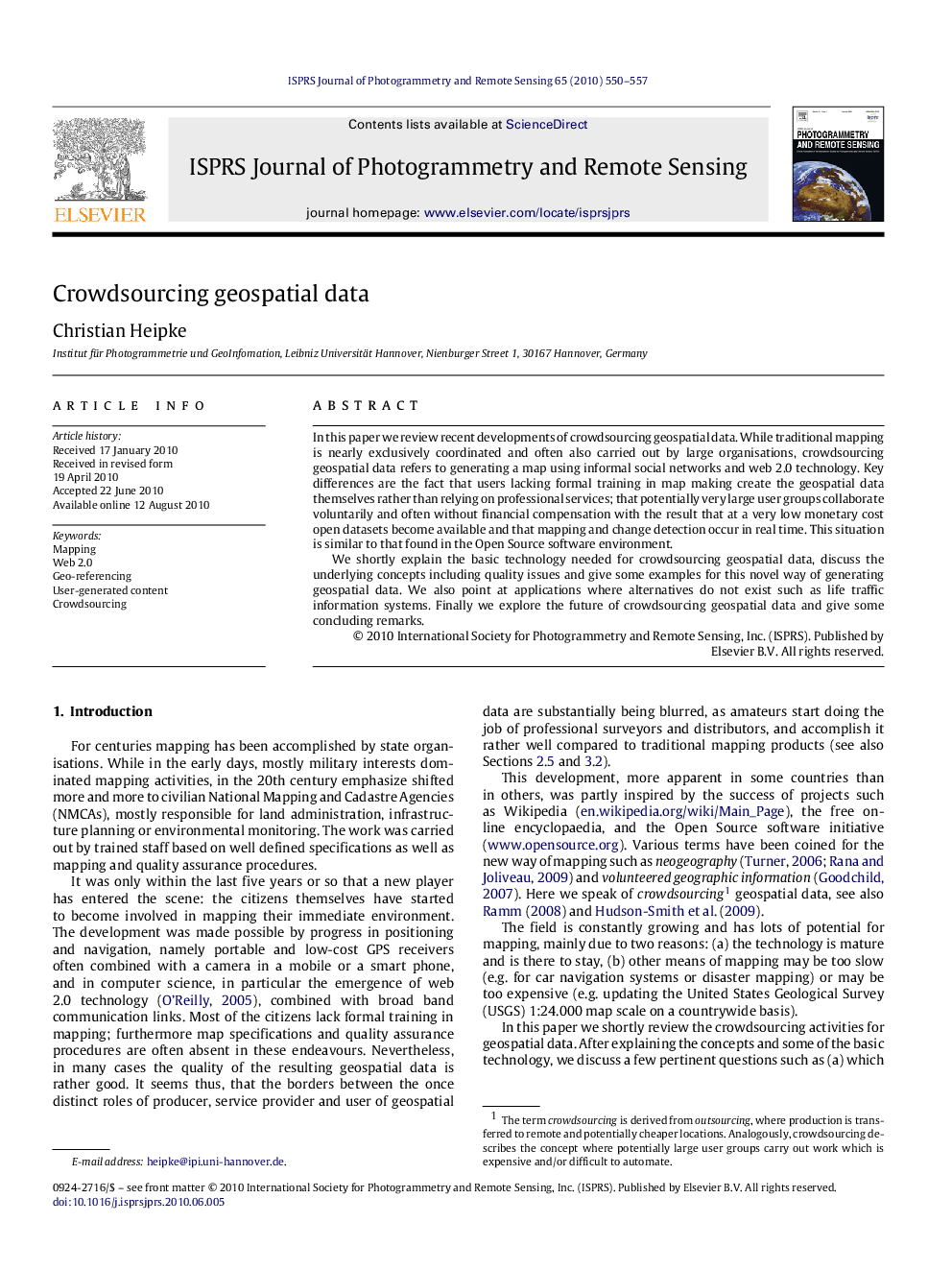| Article ID | Journal | Published Year | Pages | File Type |
|---|---|---|---|---|
| 555212 | ISPRS Journal of Photogrammetry and Remote Sensing | 2010 | 8 Pages |
In this paper we review recent developments of crowdsourcing geospatial data. While traditional mapping is nearly exclusively coordinated and often also carried out by large organisations, crowdsourcing geospatial data refers to generating a map using informal social networks and web 2.0 technology. Key differences are the fact that users lacking formal training in map making create the geospatial data themselves rather than relying on professional services; that potentially very large user groups collaborate voluntarily and often without financial compensation with the result that at a very low monetary cost open datasets become available and that mapping and change detection occur in real time. This situation is similar to that found in the Open Source software environment.We shortly explain the basic technology needed for crowdsourcing geospatial data, discuss the underlying concepts including quality issues and give some examples for this novel way of generating geospatial data. We also point at applications where alternatives do not exist such as life traffic information systems. Finally we explore the future of crowdsourcing geospatial data and give some concluding remarks.
